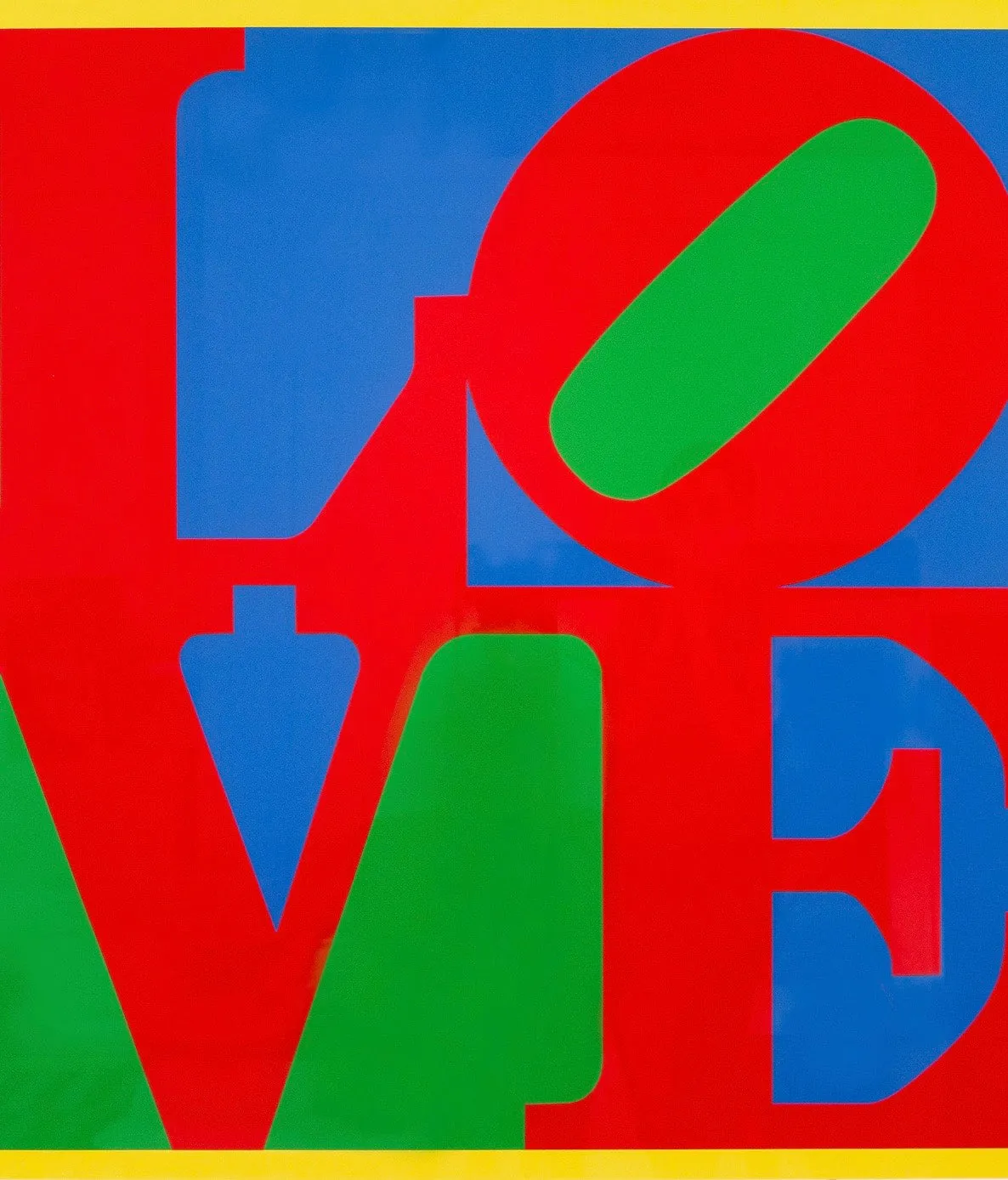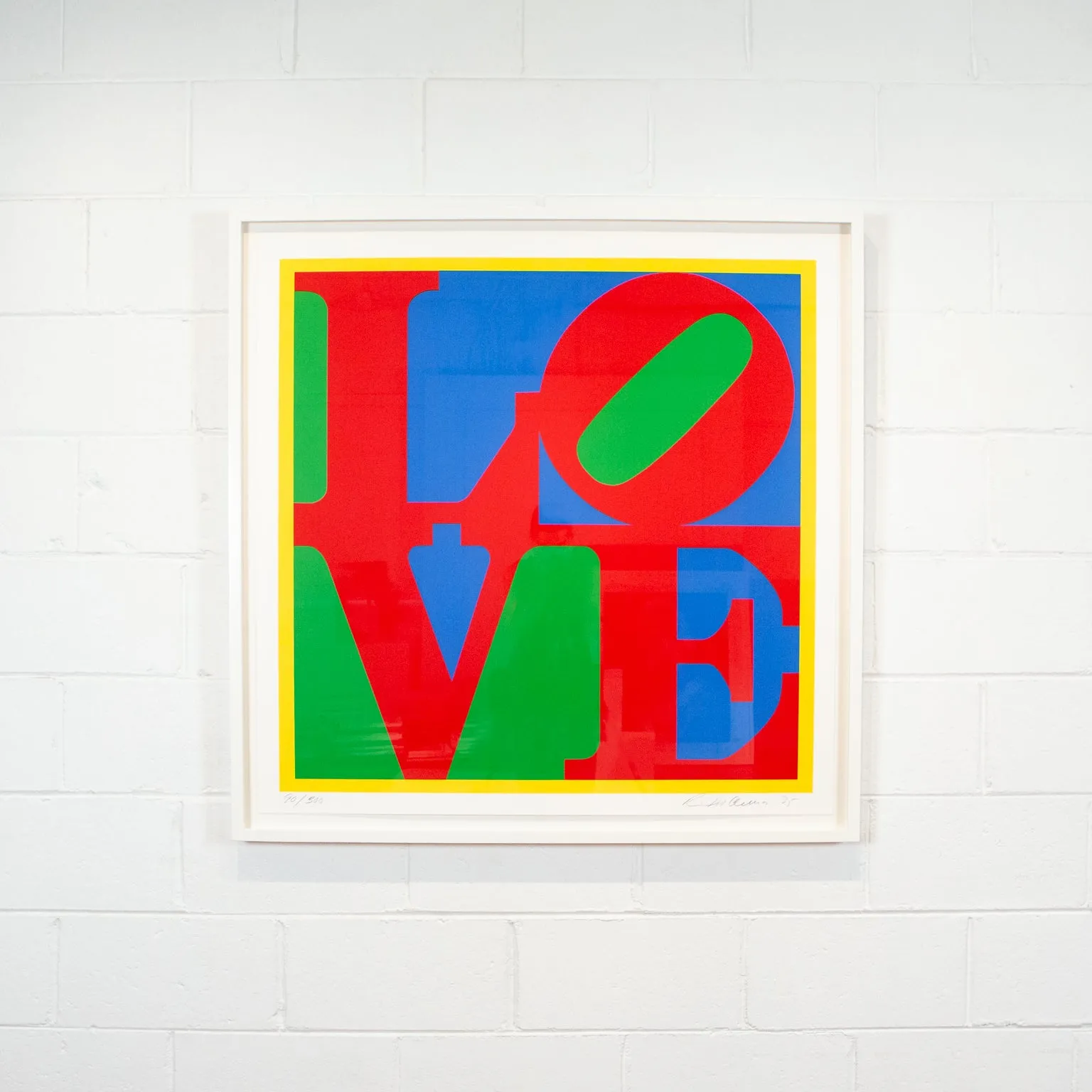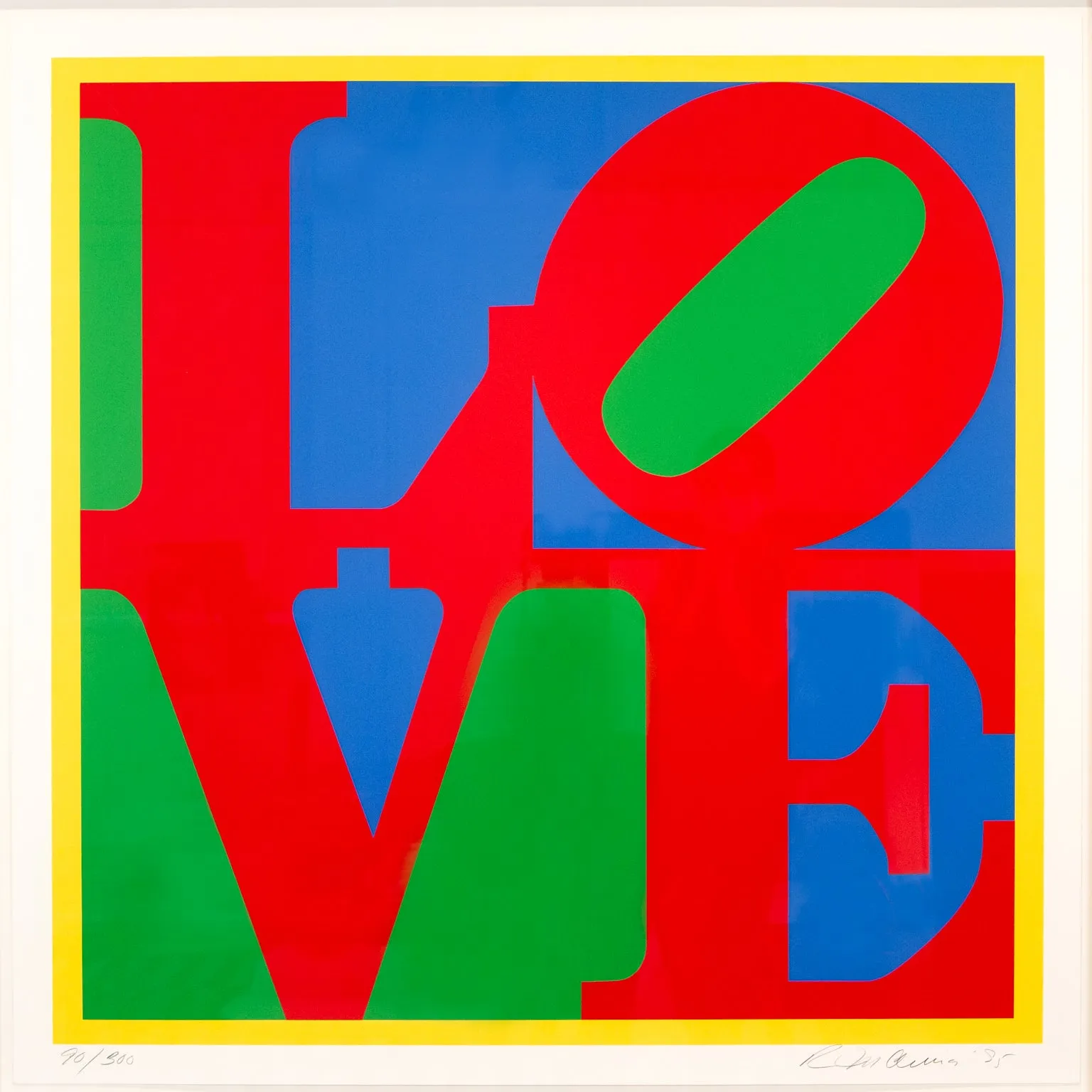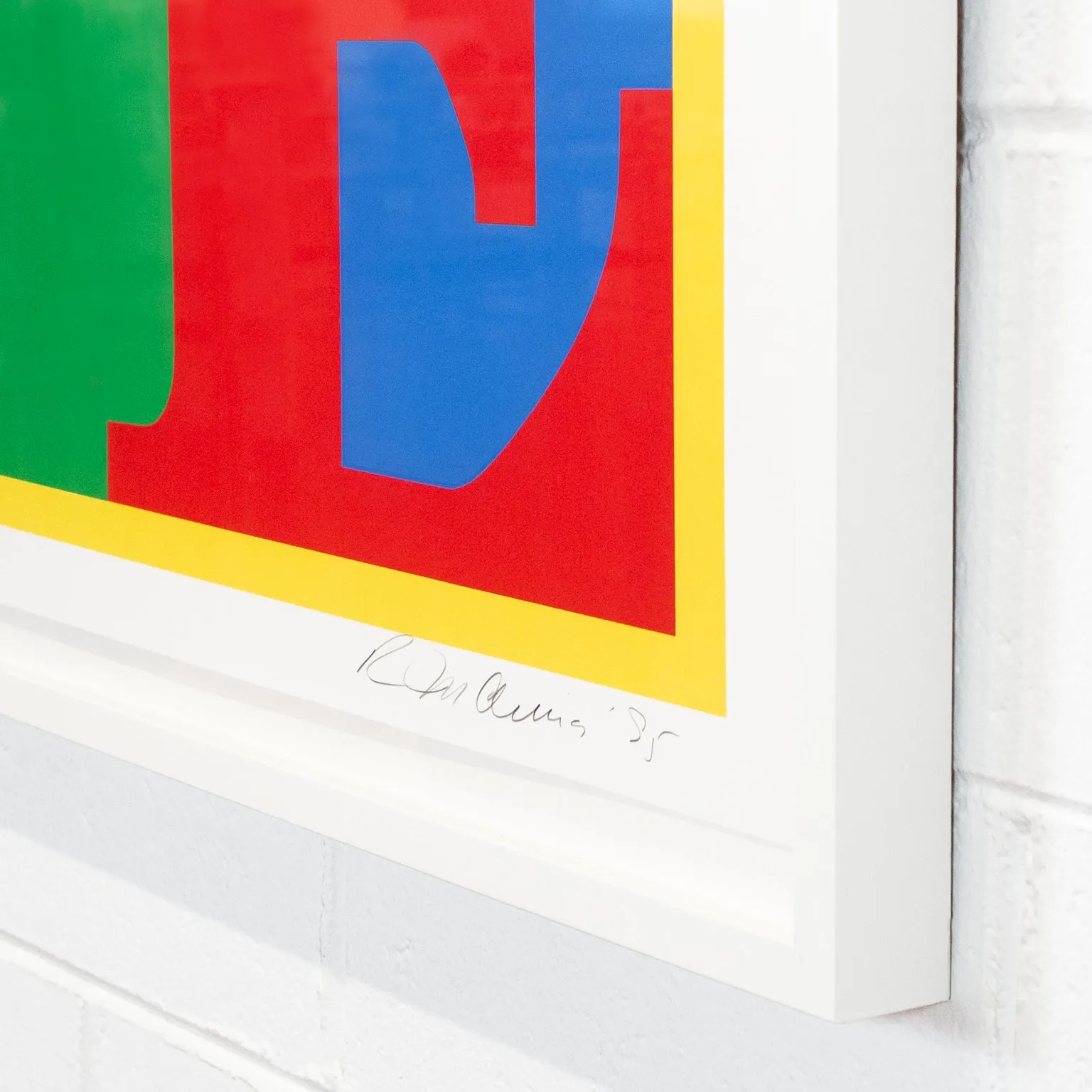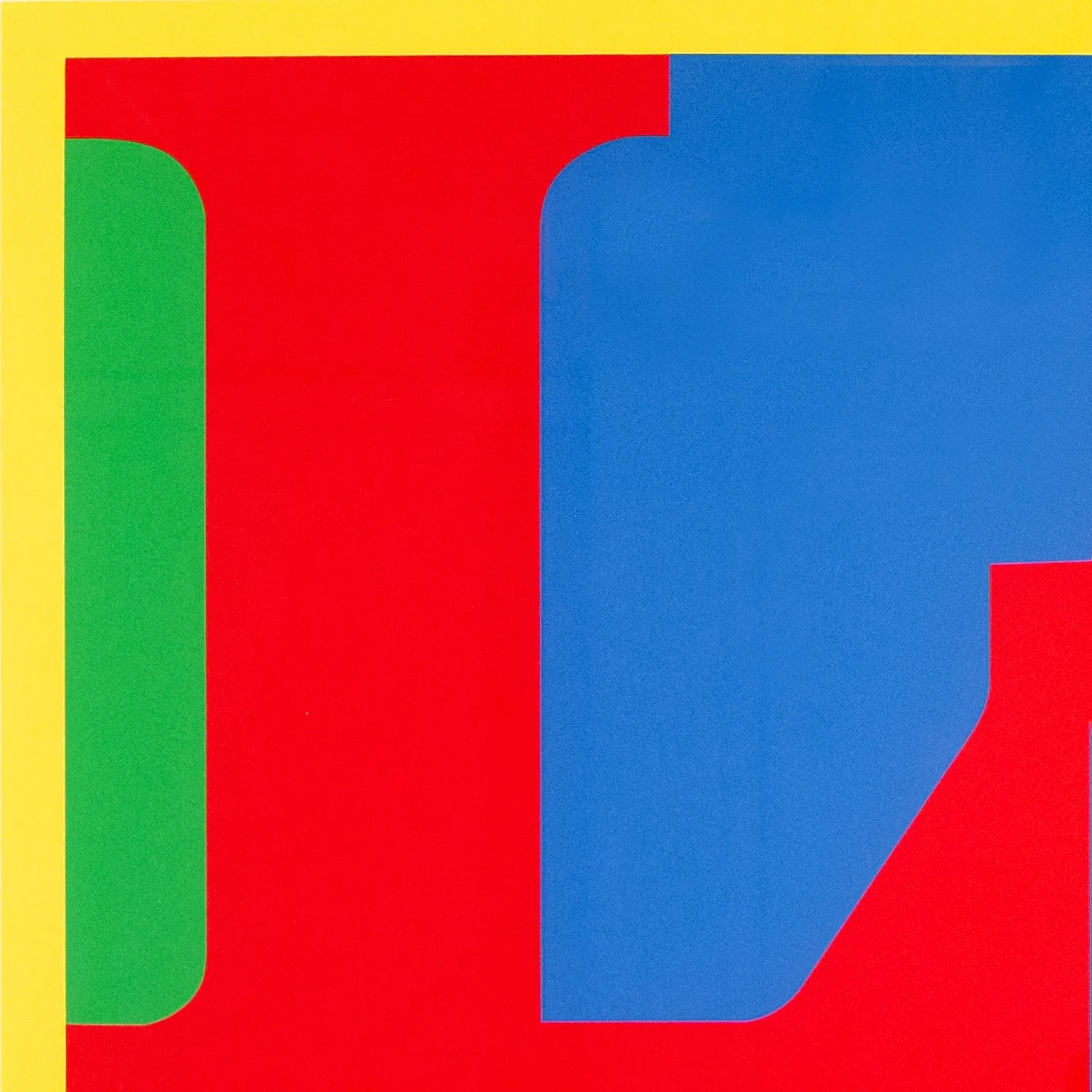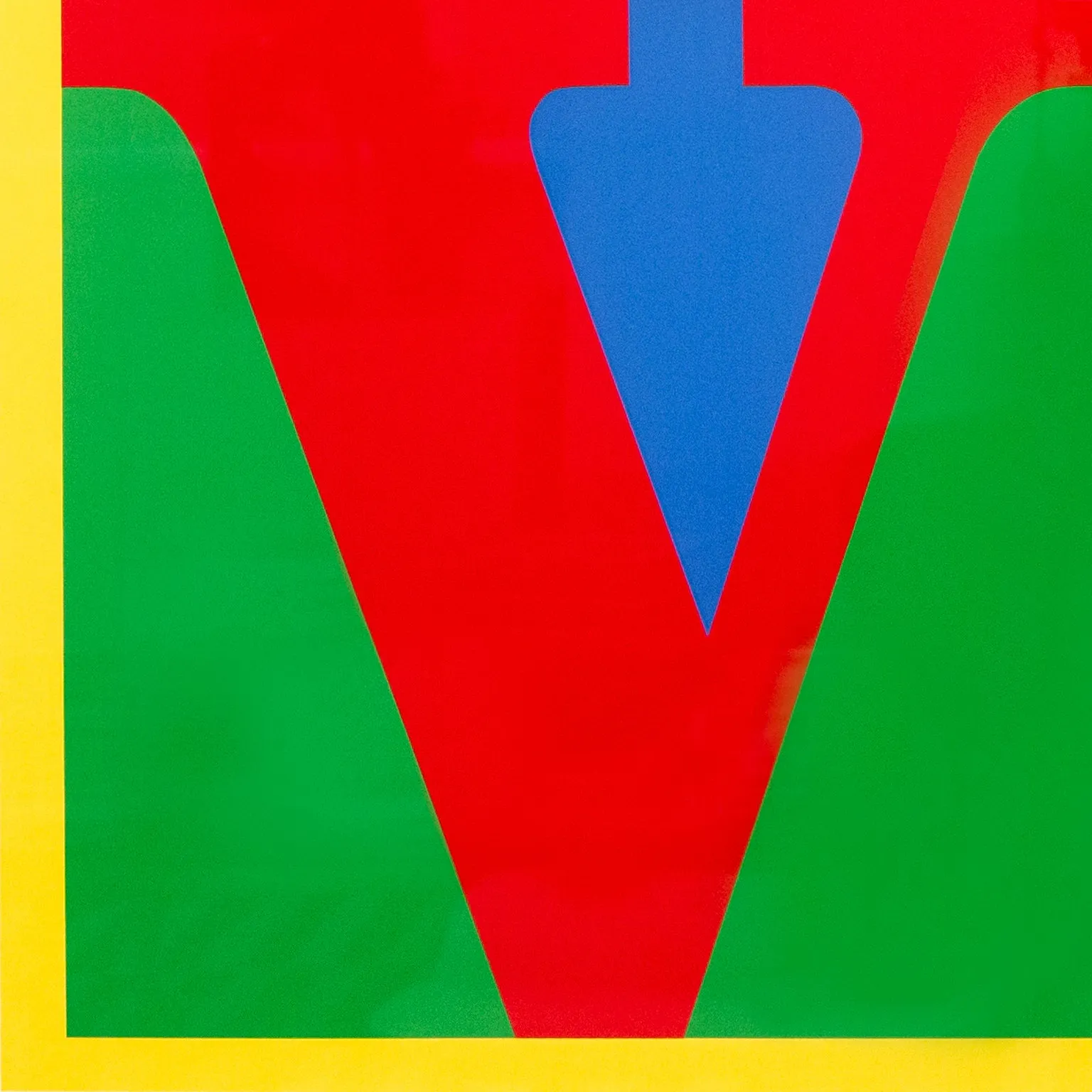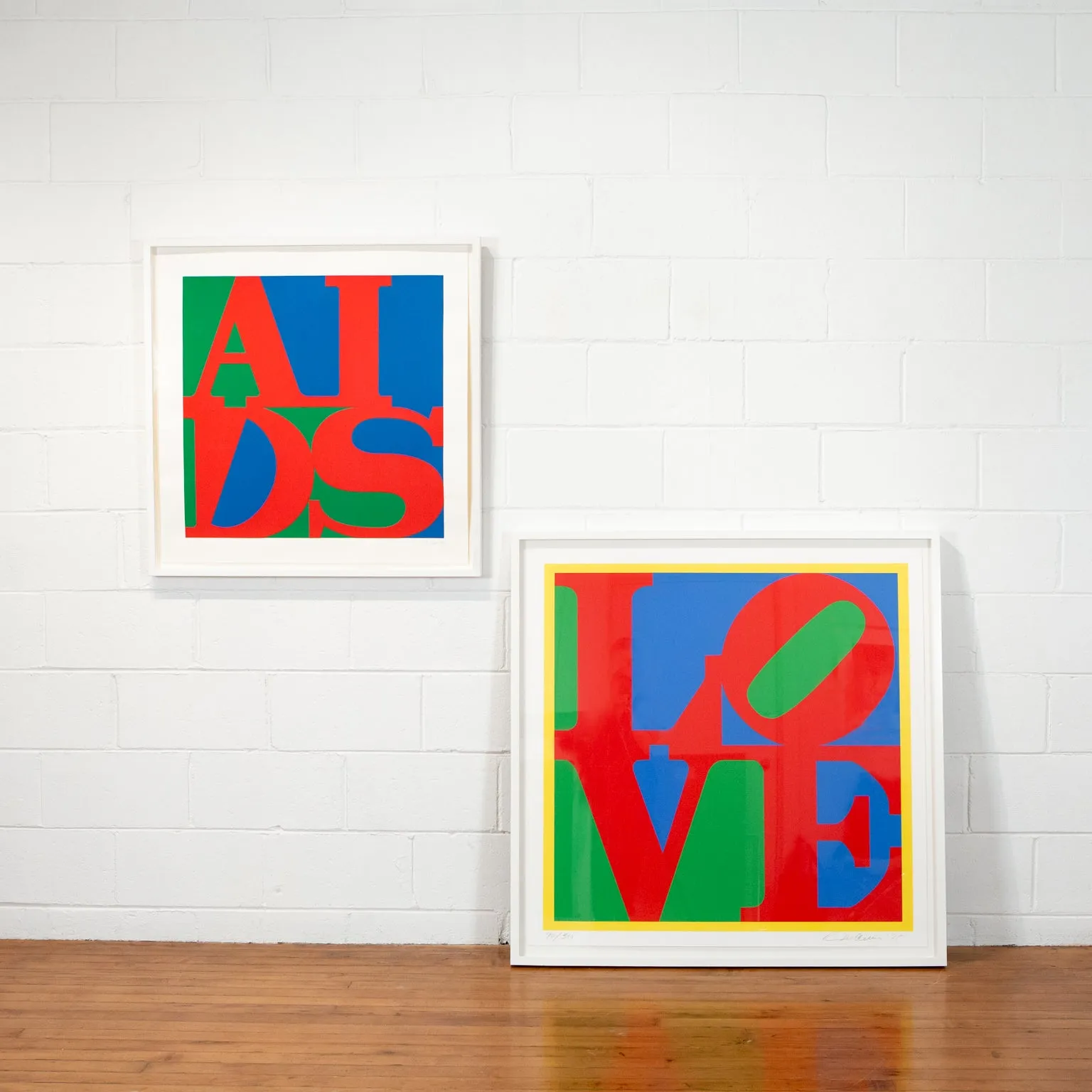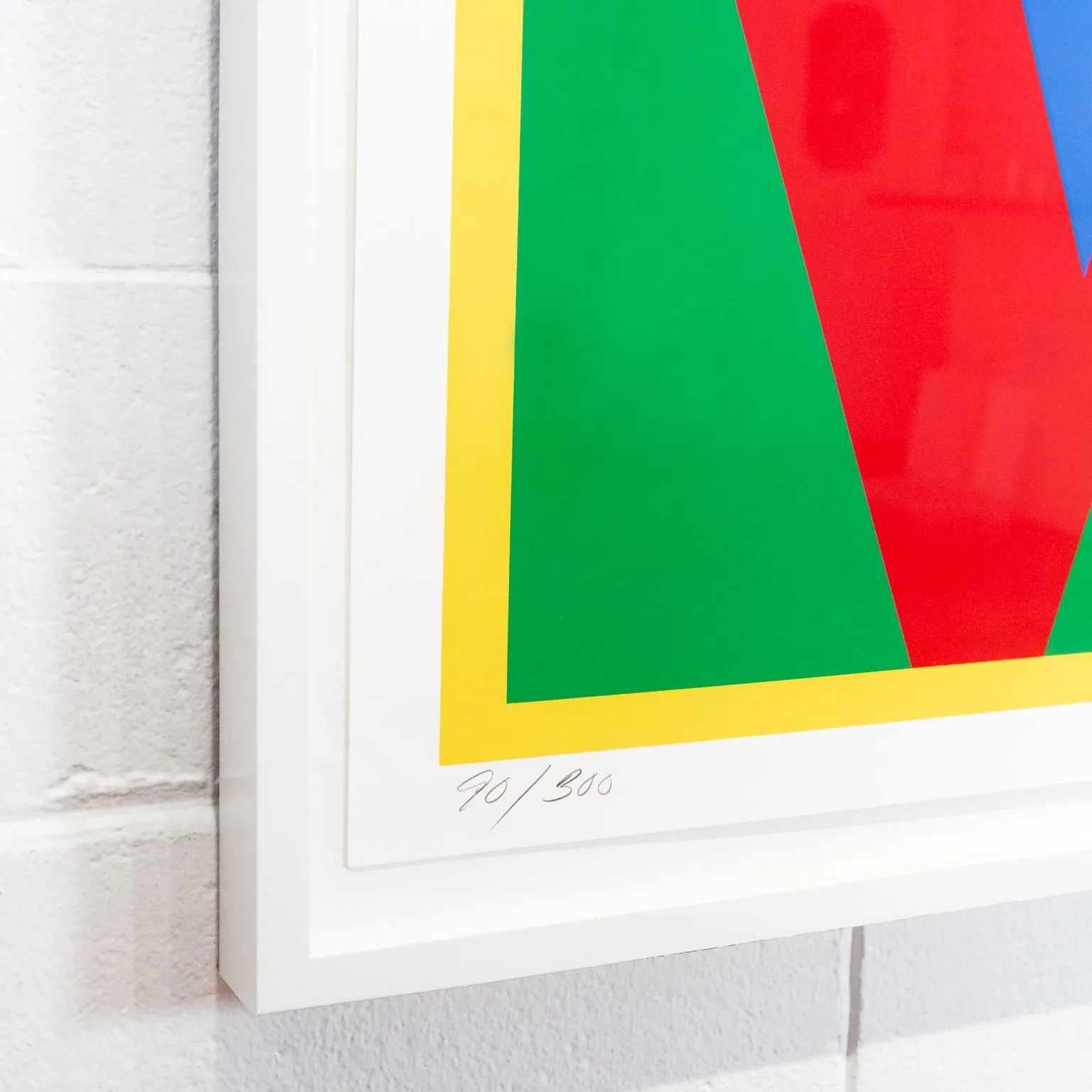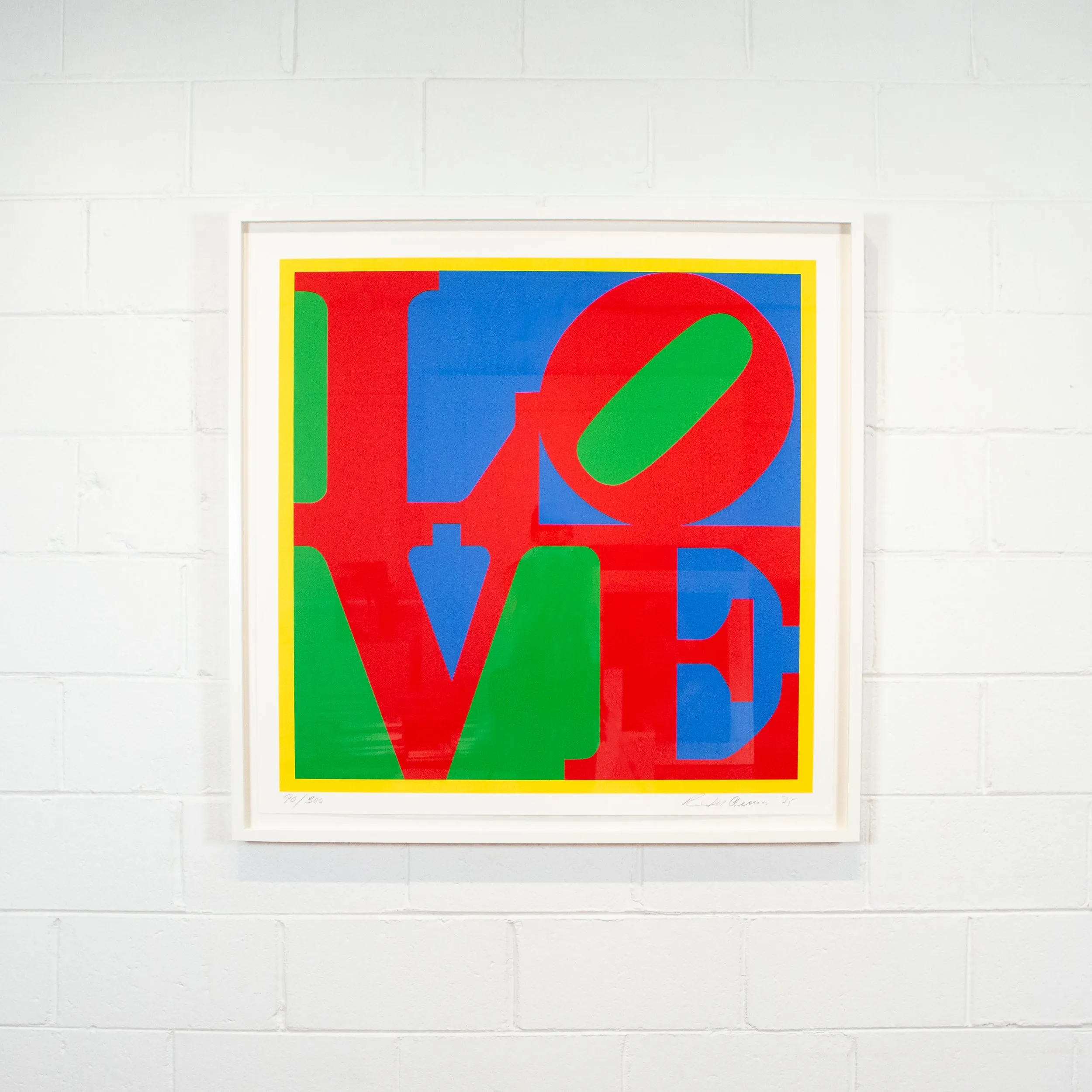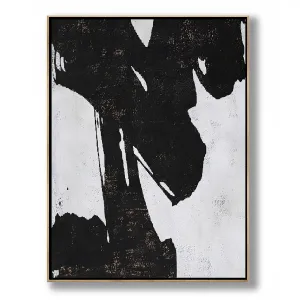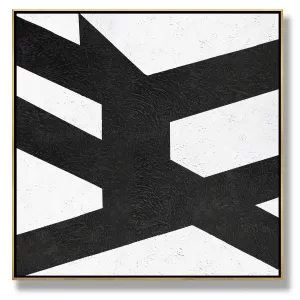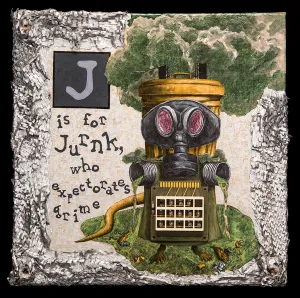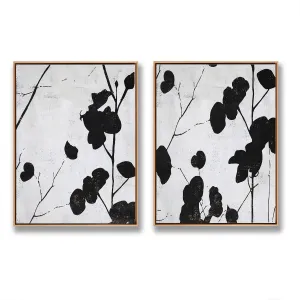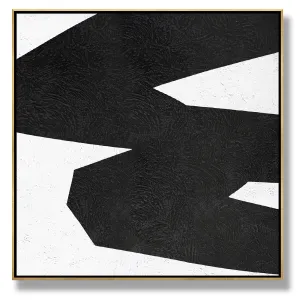Robert Indiana (1928-2018) was a pre-eminent figure of American Pop art best known for his masterpiece, the iconic "LOVE".
Indiana's signature style was influenced by Pop Art and Hard-Edged painting. His oeuvre consists of bold, simple subjects including numbers, symbols, or capitalized short words (i.e. EAT, HUG, LOVE) executed in vivid primary colors.
Inspired by the mythology of the American dream, Indiana engaged with everyday objects, words, symbols, and commercial graphic designs (like logos) and quickly became associated with the Pop Art movement. Indiana's first solo show took place in 1962 at the Stable Gallery in New York, the same gallery that hosted Andy Warhol's first solo show.
Indiana's most iconic creation is "LOVE". It consists of four capitalized letters in a bold Didone font. The letter "O" is slanted sideways transforming its oblong, negative center space into a shape directing the eye towards the "V". "LOVE" marked Indiana's return to both single-word text art and the use of a quartered, structured canvas after several years of focusing on circular compositions.
As for the origins of the work, Indiana was inspired by the green and red of the Phillips 66 gas station sign (where his father worked) against the blue Indiana sky.
Alternatively, some art historians argue that inspiration may also have come from his former partner/lover, Ellsworth Kelly, and his series Red Blue Green from 1963.
The inspiration behind "LOVE" also stemmed from Indiana's upbringing in the Christian Science church. Unlike most denominations, Christian Science churches contained minimal decor and decoration. The one-touch of decoration in each church is a simple gold inscription that reads "God is Love".
"LOVE" debuted as the Museum of Modern Art's Christmas Card in 1965 after the museum commissioned Indiana. It quickly became MoMA's best selling Christmas card and was soon adopted as a US postage stamp. In 1970 Indiana unveiled the first sculptural incarnation of "Love" at the Indianapolis Museum of Art.
One of the most joyful, powerful and instantly recognizable works "LOVE" has since been reproduced in a wide variety of mediums and formats. Indiana even translated it into Hebrew for a sculpture and print at the Israel Museum in Jerusalem.
On the surface "LOVE" appears accessible, optimistic, and almost minimalist; but it holds complex underpinnings of erotic, religious, autobiographical, and political meanings. Upon its unveiling, "LOVE" quickly permeated the popular consciousness, becoming emblematic of the idealistic and free-loving hippie movement of the 1960's.
Today this timeless work with universal appeal remains one of the most famous and sought after artworks of the 20th century. In 2011 one of the "Love" sculpture's set a new auction record by breaking $4.1 million.
Indiana's works can be found in the permanent collections of the most prestigious institutions around the world including The Whitney (NY), Los Angeles County Museum of Art (LA), Museum of Modern Art (NY), the Metropolitan Museum of Art (NY), Albright-Knox Gallery (Buffalo), and the Stedelijk Museum (Amsterdam) among many others.
Additional images available by request.
Questions about this product? or call 1.416.704.1720
"Heliotherapy Love"
USA, 1995
Screenprint on museum board
Signed, numbered, and dated in pencil by the artist
From an edition of 300
Artist and publishers copyright stamps on verso
Published by Donald J. Christal, Los Angeles
36.87"H 37.12"W (image)
40"H 40"W (framed)
Very good condition.
Note: some reflections appear in the image of the work. Additional images coming soon.
Also pictured with

